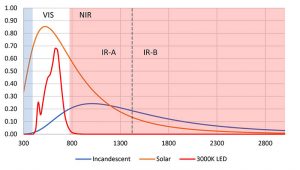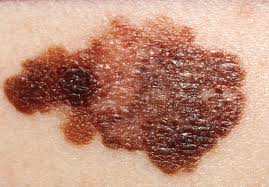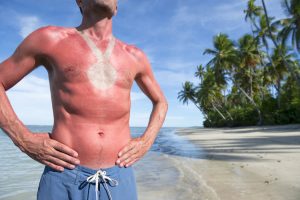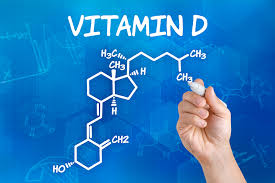These Insanely Powerful Sunlight Benefits Will Turn YOU Into A Super Human!
For how long have sunlight benefits been swept under the carpet?
Far too long of course…
but today we are finally unlocking the doors and delivering to you on a silver plate the naked truth about these mind blowing benefits you didn’t know existed.
Marc Sorenson, who has a doctorate in education, and who is the founder of the Sunlight Institute, has written an excellent book, “Embrace the Sun,” in which he reveals why sunlight is foundational for optimal health and longevity.
While vitamin D supplements clearly have their place, you cannot obtain all the benefits you get from the sun when you swallow it.
For example, many of the benefits of sunlight, such as a decreased risk of heart disease, have to do with its ability to increase nitric oxide (NO) production in your body.
Ultraviolet A (UVA) and the near-infrared light spectrum both increase NO, so you’re getting that benefit from both ends of the light spectrum.
Fifty Percent Of Sunlight Is Near-Infrared
 Near-infrared also increases cytochrome c oxidase (COO), the fourth cytochrome in the mitochondria, and neither of these sunlight benefits can be had from swallowing a pill.
Near-infrared also increases cytochrome c oxidase (COO), the fourth cytochrome in the mitochondria, and neither of these sunlight benefits can be had from swallowing a pill.
It’s really important to realize that your body is designed to benefit from sun exposure, and if you’re diabetic or have heart disease, it may well be one of the missing factors. As noted by Sorenson:
“When we get out in the sun, the research is incredible. The risk of heart disease and the risk of myocardial infarction drop dramatically in the summertime, and go up dramatically in the wintertime.
Meaning, there’s something there that has to be beyond vitamin D, because the vitamin D supplement studies with heart disease haven’t worked out well.
What we know now is the main mover to prevent heart disease is probably NO, which is a potent vasodilator.
It Opens Them Up
 Blood pressure can go down dramatically with regular sun exposure, which it does. Among people who are getting sunlight on a regular basis, the risk of dropping dead of a heart attack goes down rather dramatically…
Blood pressure can go down dramatically with regular sun exposure, which it does. Among people who are getting sunlight on a regular basis, the risk of dropping dead of a heart attack goes down rather dramatically…
You can produce 20,000 international units (IU) in 20 minutes of ideal unobstructed sun exposure on both sides of the body …”
How Sunlight Benefits Were Crushed And The Sun Avoidance Conspiracy Was Born
 Importantly, for every death caused by diseases related to excessive sun exposure — such as common skin cancers (basal cell and squamous cell carcinomas) as well as some other uncommon diseases — there are 328 deaths caused by diseases related to sunlight deprivation, according to Sorenson’s data.
Importantly, for every death caused by diseases related to excessive sun exposure — such as common skin cancers (basal cell and squamous cell carcinomas) as well as some other uncommon diseases — there are 328 deaths caused by diseases related to sunlight deprivation, according to Sorenson’s data.
According to a 2013 study, for every skin cancer death in northern Europe, between 60 and 100 people die from stroke or heart disease related to hypertension alone.
Knowing your risk of dying from heart disease or stroke is 80 times greater on average than from skin cancer should really put things into perspective.
Clearly, Sun Avoidance Is Hardly The Lifesaving Strategy Dermatologists Make It Out To Be

I’d always wondered why there was such an avid aversion of sun exposure within the dermatology community.
It just doesn’t make any sense — until I read Sorensen’s book, in which he dissects the motivation behind this illogical stance. He explains:
“The powers of darkness, as I call them, are very highly invested in the sunscreen industry.
About 70 percent of the funding comes from the sunscreen industry. Of course, with a dermatological society, they back those who produce sunscreens.
We’ve got a vast conspiracy with the sunscreen industry. That’s one of the main things. Besides … medicine in general is not that interested in keeping people well, because if they do get people well — and sunlight will do that to a great extent — they’re out of business.
There is a conspiracy out there. I’ve written a very large chapter about that and how they used their anti-sun propaganda to keep people sick.”
On Skin Cancer
 There are two basic types of skin cancer: melanoma and non-melanoma.
There are two basic types of skin cancer: melanoma and non-melanoma.
Importantly, 75 percent of all melanoma occurs on areas of the body that never see the sun, Sorenson notes, and indoor workers have double the rate of lethal melanoma skin cancer than outdoor workers.
A primary risk factor for melanoma appears to be intermittent sun exposure and sunburn, especially when you’re young.
According to data presented in his book, in 1935 about 1 in 1,500 people contracted melanoma.
As of 2002/2003, that rate was 1 in 50. Between 2006 and 2015, melanoma rates increased 3 percent per year, so rates just keep going up.
“The more we use sunscreen, the more melanoma we get. Australia’s proven that for many, many years,” Sorenson says.
“They use more sunscreen than any people on Earth, yet they have the highest prevalence of melanoma …
Melanomas Increased By 3,000 Percent Between 1935 And, Let’s Say, 2002 To 2003
 That’s a tremendous increase. Sun exposure during that time, by my government figures, has gone down by over 90 percent. We have a 90-percent decrease in sun exposure and a 3,000-percent increase in melanoma.
That’s a tremendous increase. Sun exposure during that time, by my government figures, has gone down by over 90 percent. We have a 90-percent decrease in sun exposure and a 3,000-percent increase in melanoma.
How does that add up for their theory? It doesn’t add up at all. They’re now beginning to realize that, I think, little by little. But still, they’re in that hip pocket of the medical schools that promote sunscreens and such.”
As noted by Sorenson, the sun actually protects you from melanoma. It does not protect again the more common skin cancers, though. However, protection from those can be had from a diet high in antioxidants.
One Of The Key Sunlight Benefits Is “Sun Avoidance Kills Far More People Than Sun-Related Diseases”

Non-melanoma skin cancers are primarily divided into basal cell and squamous cell cancer, and sun exposure does increase your risk of those cancers.
The thing to remember is that these are typically nonlethal. The relative safety of skin cancer is craftily hidden, however, by combining statistics for nonfatal and fatal skin cancers.
Most of the deaths attributed to non-melanoma skin cancers (basal and squamous cell), which number around 4,420 per year, according to cancer.net, are in those who have severely compromised immune systems.
Melanoma, meanwhile, kills an estimated 7,230 people per year in the U.S. It’s also important to realize that common skin cancer does not turn into the deadlier melanoma.
When you consider the statistics, it seems clear that sun avoidance is actually increasing your risk of deadly skin cancer, and that by exposing your skin to the sun, you will decrease your risk of melanoma.
What’s More, Sun Avoidance Will Also Raise Your Risk Of Internal Cancers…
 …along with a long list of chronic diseases, the mortality rates of which are far more alarming than melanoma.
…along with a long list of chronic diseases, the mortality rates of which are far more alarming than melanoma.
As mentioned earlier, for every sun-related death there are 328 deaths from sun-deficiency-related diseases.
Sorenson’s book also cites Iranian research showing women who cover themselves completely have 10-times higher risk of breast cancer compared to women who don’t cover themselves completely.
That’s a 1,000-percent greater risk of breast cancer. Yet women are being told to avoid sun exposure at all costs to protect their health.
Sunlight Benefits: You Can Benefit From Sun Exposure Year-Round

During wintertime at latitudes above 22 degrees you’re not going to be able to get enough ultraviolet B (UVB) exposure on your skin to significantly raise your vitamin D level, unless you are at high altitudes in the mountains.
However, you’re still getting other photo products such as brain-derived neurotropic factor (BDNF), NO and others.
They will be produced even in the winter when the sunlight is too weak to trigger vitamin D production.
“I tan every day in St. George, Utah,” Sorenson says. “It may be 40 degrees F. outside; I step into the garage, so I’m protected from the breezes.
I get out in the sun every day. It’s not doing me a bit of good for vitamin D, but I do have my own tanning bed. I can go into that tanning bed and it produces a dramatic amount of vitamin D.
So will a good vitamin D sunlamp … Sometimes I fudge and take a vitamin D pill, but I would rather [use my tanning bed] because it’s a lot more natural than taking a vitamin D pill, in my opinion.
That’s The Way That I Do It …

Of course, tanning beds have been much maligned, yet it dramatically increases bone strength. Moreover it also substantially increases vitamin D levels.
It reduces the risk of psoriasis and eczema. It does many other things that they never give any credit for …
I was just thinking about the new study on Parkinson’s disease, which showed people who are out in the bright sun daily, regularly have 1/50th the risk of ever getting Parkinson’s.
That’s fairly new research. I was stunned by that research.”
Avoid Sunburn At All Costs

Naturally, regardless of the season, you want to make sure you do not get sunburn.
Once your skin turns the lightest shade of pink, move into the shade or put on clothing and a hat to cover up your skin.
Beyond that point, there’s no benefit, only the risk of skin damage. As noted by Sorenson:
Your body shuts it down at that point. In fact, your body will shut down your vitamin D production, along with anything else that it doesn’t want.
There is a very interesting piece of research … that shows people who use sunscreen have anywhere from three to six times the risk of sunburn.
Another one was a big meta-analysis, which showed there was no benefit whatsoever in using sunscreens.
None at all. In fact, there was a slight increase in the risk of all skin cancers together.”
Sun Exposure Decreases Risk Of Autoimmune Disease
 Aside from lowering your risk for a variety of cancers, including melanoma, sun exposure also radically decreases your risk of autoimmune diseases.
Aside from lowering your risk for a variety of cancers, including melanoma, sun exposure also radically decreases your risk of autoimmune diseases.
Diseases in which your body identifies proteins and other structures made by the body as foreign and destroy them. Two classic examples are multiple sclerosis (MS) and Type 1 diabetes.
Sorenson cites research from Finland showing vitamin D supplementation decreased the risk of Type 1 diabetes by five- to six fold.
When compared to Venezuelan children, who get ample sun exposure, Finnish children had 400 times the risk of Type 1 diabetes.
Researchers have also found an inverse risk between vitamin D status and MS risk, and studies have confirmed MS is far less prevalent in areas near the equator, such as Ecuador, where prevalence ranges from a low of 0.75 per 100,000 inhabitants in the South, to a high of 5.05 per 100,000 in the capital city of Quito.
Sunlight Benefits: What’s A Healthy Vitamin D Level?

Science has shown 20 ng/mL (50 nmol/L), which is typically considered the cutoff for vitamin D sufficiency, is still grossly inadequate and dangerous to health.
For optimal disease protection, you need a vitamin D blood level between 60 and 80 ng/mL (150 to 200 nmol/L).
Once you get above 60 ng/mL, the risk for cancer and other chronic illness declines dramatically — in the case of breast cancer by more than 80 percent.
There appears to be variations in the ideal level, however, depending on the condition in question.
Sorenson cites research showing that athletic performance, and the risk of injury due to falling among non-athletes, improved until they reached a level of about 63 ng/mL (158 nmol/L). At which point performance and risk of falling started to slightly decline again.
On the other hand, in the case of breast cancer, which is a major concern for women, levels upward of 80 ng/mL (200 nmol/L) appear to be the most protective.
When aiming for those higher levels, though, I believe getting your vitamin D from sunlight becomes all the more important, especially if you’re seeking protection from diseases such as heart disease.
Because, remember, swallowing a vitamin D pill will not trigger NO production like sun exposure does, and increasing NO appears to be a significant way by which sun exposure lowers your heart disease risk.
One of sunlight benefits it also boosts your serotonin level, a neurotransmitter thought to play an important role in depression.
In his book, Sorenson cites research showing that spending the entire day in bright sunlight increases your serotonin level by 800 percent. A precursor to serotonin — melatonin — is also crucial for sleep and cancer prevention.
Sunlight Benefits And Visual Acuity
 Myopia, with people needing glasses at an early age, and presbyopia, which is when you need reading glasses, are also on the rise, and this too may be a side effect of insufficient sun exposure.
Myopia, with people needing glasses at an early age, and presbyopia, which is when you need reading glasses, are also on the rise, and this too may be a side effect of insufficient sun exposure.
Sorenson explains:
“One of the studies compared people in Singapore to people who grew up in Australia.
They had the same ethnic background, basically Oriental-Asian background. Those who played in the sun in Australia had about one-sixth the risk of getting myopia.
It is so important.
If we don’t get out and we don’t focus our eyes in the sun, if we don’t look into the distance — that may be one of the reasons we don’t get enough vitamin D, we don’t get enough serotonin, NO and any of the other photo products produced by the sun.
There Is A Pandemic Of Myopia.
 We’re seeing it here in the United States with the Asian kids. In many cases, as they get older, it will lead to blindness.
We’re seeing it here in the United States with the Asian kids. In many cases, as they get older, it will lead to blindness.
Of course, they always talk about macular degeneration and so forth, but there’s a dichotomy here, because if you have macular degeneration, they tell you to totally stay out of the sun.
It does tend to relate to sun exposure.
At the same time, vitamin D levels that are high tend to reduce the risk. So, what do you do? Stop getting your sun and take a vitamin D pill? I don’t think so.
I think if we’re in the sun the way we ought to be and eat the polyphenols and so forth … that’s probably the way to prevent most of the older-age diseases.
Now, as far as presbyopia … I’ve had it since I was about 40. I just take some reading glasses and I can get along with reading my fine print. I wasn’t able to escape it. It runs in my family.
I think there must be some genetic component there, because I was out in the sun and I never had any myopia.”
As for age-related macular degeneration (ARMD), which is the leading cause of blindness among the elderly, research by Dr. Chris Knobbe, an ophthalmologist who wrote a book on the risk factors of ARMD, whom I’ll be interviewing on this topic, has compiled massive amounts of data showing that ARMD did not exist before 1930.
And this appears largely due to the consumption of processed foods, especially processed vegetable oils.
Sugar, Of Course, Does Not Help Either
 That combination causes massive degeneration of your vision, which is very difficult to reverse in its advanced stages.
That combination causes massive degeneration of your vision, which is very difficult to reverse in its advanced stages.
But if you catch it at an early stage, you can reverse it using dietary changes.
For presbyopia, I recommend not wearing sunglasses and avoiding reading glasses.
As you age, there’s a tendency to want to make that font bigger to see text better. But I recommend resisting that temptation, as it’s only going to make matters worse.
Also, avoid squinting and simply blink instead.
Blink multiple times until the text becomes clear, and then relax your eyes to refocus. Brighter light may also help you read without increasing the font size on your tablet or computer, or using reading glasses.
Sunlight Benefits For Bone Health
 Sorenson also recounts some of the historical data supporting the idea that sun exposure benefits health in important ways and boosts athletic performance.
Sorenson also recounts some of the historical data supporting the idea that sun exposure benefits health in important ways and boosts athletic performance.
Aside from breast health, research shows sun exposure also helps prevent osteoporosis. This is yet another significant concern for women in particular.
Sorenson says;
“In Spain, women who were sun seekers, those who were always outside, trying to tan … as much as possible.
Those women had 1/11th the risk of ever having a hip fracture as women who were avoiding the sun.
That one point alone should get every woman out in the sun. Because all women are afraid not only of breast cancer but also of osteoporosis.
Women Need Sunlight To Prevent It
Whether vitamin D pills will work, I am not convinced.
They don’t give them enough vitamin D so they can’t really tell in the research. But we know that sunlight works to prevent hip fractures. Boy, that’s a big one to me …
Higher vitamin D levels also dramatically help your brain … People think better … You are 3.5 times more likely to end up in a rest home [assisted care facility] if you do not have a good vitamin D level …
If you’ve got a mom, dad, uncle or whoever is in danger of going there, I think it can be prevented …
They can stay at home, maybe with a son or daughter. Moreover they wouldn’t need to worry about them injuring themselves every other second.”